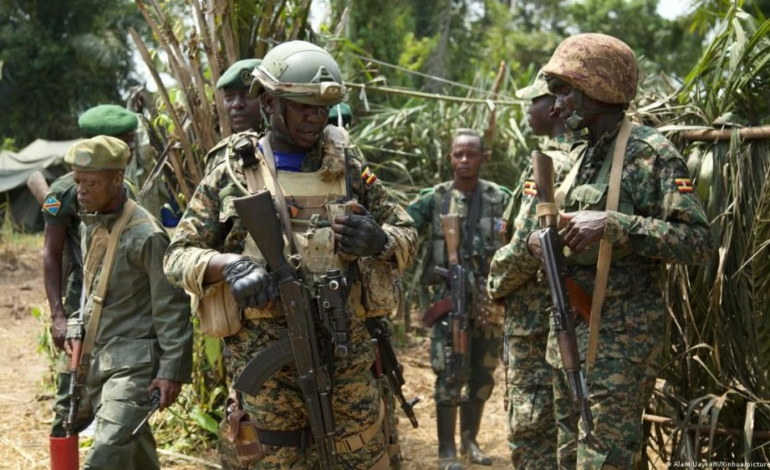
Faith Nyasuguta
In the shadowy realm of wildlife trafficking, Sub-Saharan Africa has emerged as a significant hotspot for illicit trade routes and clandestine operations fueling a multi-billion-dollar industry.
The World Wildlife Crime Report 2024 reveals that this region accounts for a staggering 19 percent of global wildlife material seizures, indicating its critical role as a major source of trafficked wildlife.
Between 2015 and 2021, the illegal wildlife trade from Sub-Saharan Africa and South Asia surged, contributing to 44 percent of all recorded seizures. Among the species targeted, pangolins bore the brunt with a 32 percent share, highlighting the dire plight of these endangered creatures.
Additionally, elephants and various carnivores, illegally traded as scales, meat, bodies, and live specimens, ranked among the top five species groups seized during this period, exposing the breadth and depth of the crisis.
The report conducted in collaboration with the International Consortium on Combating Wildlife Crime (ICCWC) — which includes key stakeholders like CITES, Interpol, the World Bank, and the World Customs Organization — sheds light on the scale and scope of wildlife trafficking in the region.
Initiated in response to a United Nations General Assembly resolution on Tackling Illegal Trafficking in Wildlife adopted in 2021, the report aims to bolster efforts to combat illegal wildlife trade and protect biodiversity. The report focuses on crimes associated with the illegal harvest and trade of wildlife species, in direct violation of national laws and international conventions.
Drawing on data from over 140,000 seizure records spanning 162 countries and territories, the report reveals the staggering scale of the illicit wildlife trade. From coral pieces to live specimens, medicines to meat, the illicit market spans a vast array of commodities, driven by insatiable demand and organized criminal networks.

Sub-Saharan Africa, along with South Asia, constituted the majority of global trade flows in wildlife trafficking between 2015 and 2021, accounting for 44 percent of all recorded seizures where the shipping origin was specified. Pangolins emerged as the most trafficked species, comprising a staggering 32 percent of seizures during this period. Elephants and carnivores ranked among the top five species groups seized in both Africa and Asia, indicating the widespread nature of the problem across the two regions.
In Africa, pangolin, rhinoceros, and elephant items together made up over 95 percent of all seizures. In Asia, a large share of seizures involved timber followed by pangolin items. In Europe, eels led followed by agarwood. In the Americas, timber (cedar) was by far the top taxonomic group using this metric (79 percent), followed by crocodilian and rosewoods (five percent and three percent respectively).
In Oceania, the top taxonomic groups involved crocodilians, costus root, snakes, ginsengs, and cacti in order of importance. Coral, crocodilian, and snake items were more prominent in the other three regions, with parrots and cockatoos prominent in the Americas and bivalve mollusks in Oceania. Plants also comprised a significant proportion of the records in Europe (e.g., aloes and cacti) and in Oceania such as costus root and ginseng.
The report highlights the devastating impact on biodiversity and ecosystem stability, undermining environmental, social, and economic values. It highlights the urgent need for coordinated action to address wildlife trafficking, which poses a grave threat with over 40 percent of species recorded in seizures classified as threatened or near-threatened, highlighting a looming conservation challenge.
Recent international police operations, such as Project Disrupt led by Interpol and UNODC, have revealed the convergence of wildlife trafficking with other illicit activities, such as arms trafficking and drug smuggling. This paints a troubling picture of interconnected criminal networks operating with impunity across borders.
Tragically, the toll extends beyond the natural world, with wildlife rangers paying the ultimate price in their valiant efforts to protect wildlife and enforce conservation laws. According to the report, over 2,300 wildlife rangers have lost their lives in the line of duty between 2006 and 2021, with the majority (80 percent) of casualties occurring in Africa and Asia.
As enforcement efforts intensify, traffickers adapt, leading to shifts in sourcing and trafficking routes to evade detection. Both sourcing and routing shifts in response to enforcement action have been observed in elephant ivory trade and rhinoceros horn trade patterns as illegal traders find other ways around law enforcement.
For example, from about 2018 there was a series of prosecutions of elephant ivory traffickers in East Africa that appears to have influenced illegal traders to switch to exporting ivory from the other side of the continent entirely.
Between 2010 and 2015, the weight of tusks in seizures made in or intercepted from Kenya and Tanzania dwarfed those connected with Nigeria and the Democratic Republic of the Congo between 2016 and 2021, the reverse was true.
A World Bank survey of multilateral and bilateral donor agencies, foundations, United Nations programs, and international non-governmental organizations found that over $1.3 billion had been committed between January 2010 and June 2016 to combat illegal wildlife trade in Africa and Asia, approximately $190 million per year.

Donor funding was allocated to projects in 60 different countries and to various regional/multi-country and global projects. In total, 63 percent of the funds were committed to Africa ($833 million), 29 percent to Asia ($381 million), 6 percent to global programs and initiatives ($81 million), and 2 percent to projects covering both Africa and Asia ($35 million).
The top five recipient countries accounting for $328 million were Tanzania (8 percent), the Democratic Republic of the Congo (5 percent), Mozambique (5 percent), Gabon (3 percent), and Bangladesh (3 percent).
The report serves as a clarion call for immediate and sustained action. Protecting endangered species and preserving biodiversity require a concerted effort from governments, non-governmental organizations, and local communities. The stakes are high, and the time to act is now.
RELATED:




